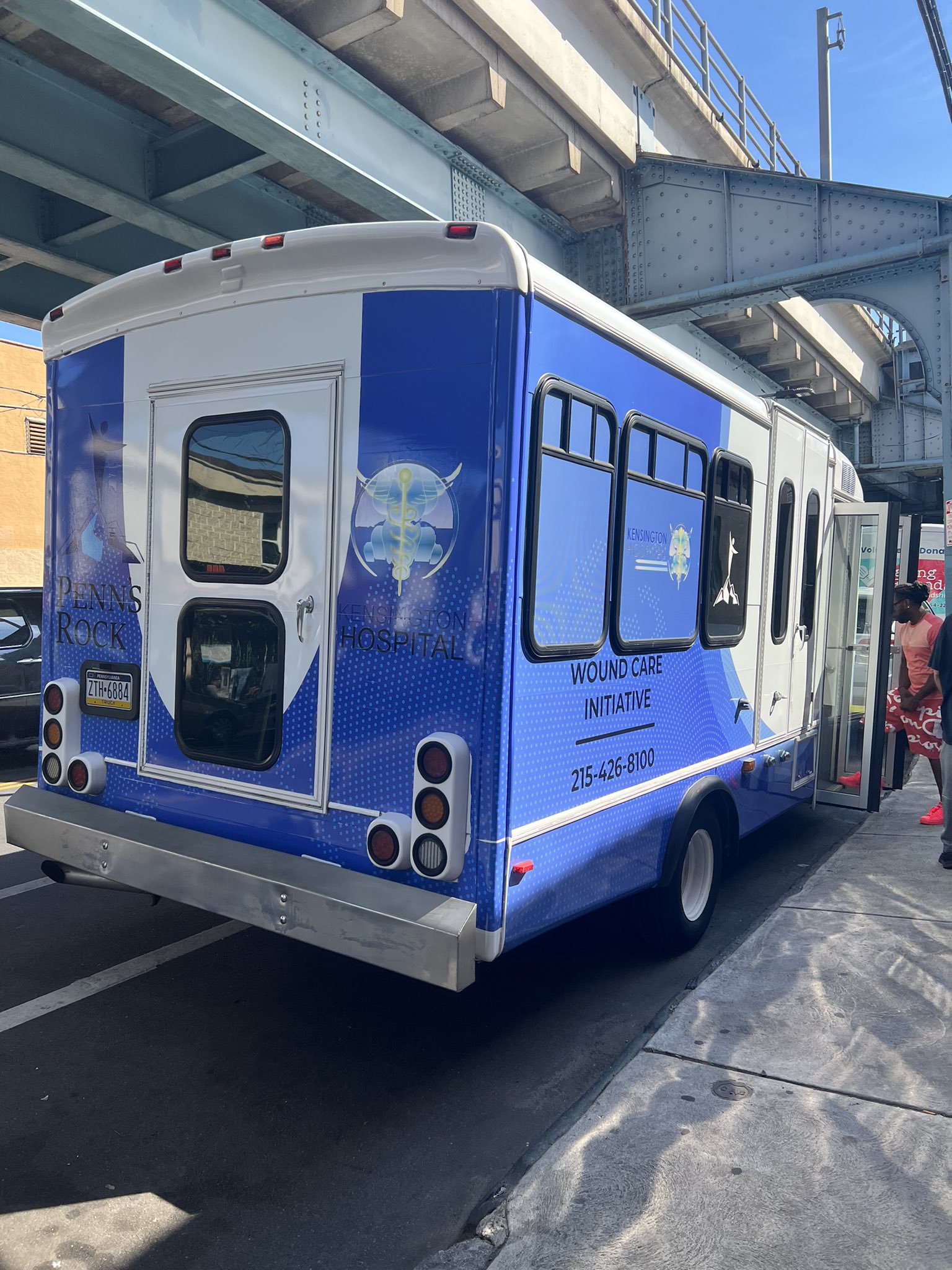
During their 100-Day Challenge, the Kensington Team addressed critical health barriers to housing for those struggling with substance misuse, including wound care and access to residential treatment facilities and other types of supportive housing relevant to their needs.
In 100 days, place 350 people who are frequent system users (including long-term substance use disorder) into housing opportunities and/or enroll in behavioral healthcare treatment opportunities.
The Team exceeded its goal of serving 350 people from the Kensington neighborhood who were experiencing healthcare and housing needs related to unsheltered homelessness and substance misuse. By bringing together healthcare and homelessness providers, the Team was able to design new service practices that address the unique needs of this population, most notably tackling the health barriers that complicated access to interim and permanent housing for many people. By developing a data-sharing system that respected the privacy of clients but allowed the providers to share information, the Kensington community will continue to break down silos between housing and healthcare and collaborate to more quickly and effectively help people access a holistic set of services and support.
The Kensington neighborhood of Philadelphia, PA, is significantly impacted by homelessness and opioid misuse. One survey found that up to 75% of those experiencing unsheltered homelessness in Kensington also struggle with substance use disorder (SUD). Almost half of those surveyed have been homeless for more than one year.
Frontline staff and System Leaders in Kensington knew they would have to involve both the homeless response and healthcare systems in a joint effort to address the barriers those with SUD were facing on their journey out of homelessness if they were to make progress during the 100-Day Challenge. They built a System Leader group and Challenge team comprised of representatives from both systems and leveraged existing work on data interoperability to kickstart their collaboration.
New Ways of Working Together: Cross-Systems Collaboration
Coordination between Behavioral Health and Homeless Services resulted in the creation of a de-duplicated By-Name List of those experiencing homelessness and substance use disorder (SUD) in the Kensington area. Increased conversation between treatment and housing providers streamlined the link between inpatient drug treatment and long-term, recovery-focused housing. Case workers from both systems collaboratively engaged participants in shelter access, housing assessments, and case management by co-locating services at Wellness Resource Fair held in the Kensington neighborhood.
Improved use of new and existing housing resources
Improved understanding of the housing process and housing options by staff in both systems allowed for better-tailored matches for individuals targeted by the Challenge. This made the system more effective at utilizing housing opportunities as they came online, including Master Lease Rapid Re-Housing units, Home $200 shallow rent units, additional Couples Safe Haven spots, and a new low-barrier recovery residence for couples.
Innovative treatment options
Spurred by collaboration among the Team members of the 100-Day Challenge, staff from Kensington Hospital worked with members of the homeless response system to implement a wound care program anchored by a mobile wound care van that makes weekly visits to Kensington. This was the first licensed wound care van in the state. This wound care is not only critical healthcare, but it also lowers barriers to shelter, as untreated wounds preclude clients from accessing most housing resources. In just 100 days, the team was able to serve 82 clients in need of wound care.
There are three reasons why the wound care van was so successful:
- Compassion: Those seeking wound treatment are met with compassion in a judgment-free environment that seeks to uphold their dignity and provide excellent care.
- Lived Experience: The homeless response staff member at the forefront of designing wound care with Kensington Hospital has lived experience with both homelessness and substance misuse.
- Trust: Patients receiving treatment at the wound care van have developed trusting relationships with providers; patients do not fear criminalization, and the healthcare professionals offer but do not push patients toward recovery if they are not ready. This encourages follow-ups and has led some patients to seek recovery options in several cases.
Read more about the Team’s work on Wound Care to Housing here.
With the support of leadership from the homeless response and healthcare systems, as well as the local and city government, the Team is engaged in an extended sustainability project to institutionalize the innovations and best practices that emerged from the 100-Day Challenge. Among their priorities are a continued focus on appropriate data sharing between the healthcare and housing systems, improving co-location of services and bringing Wellness and Housing Fairs to clients in the Kensington neighborhood, and streamlining linkages between residential drug treatment, recovery, and permanent housing.